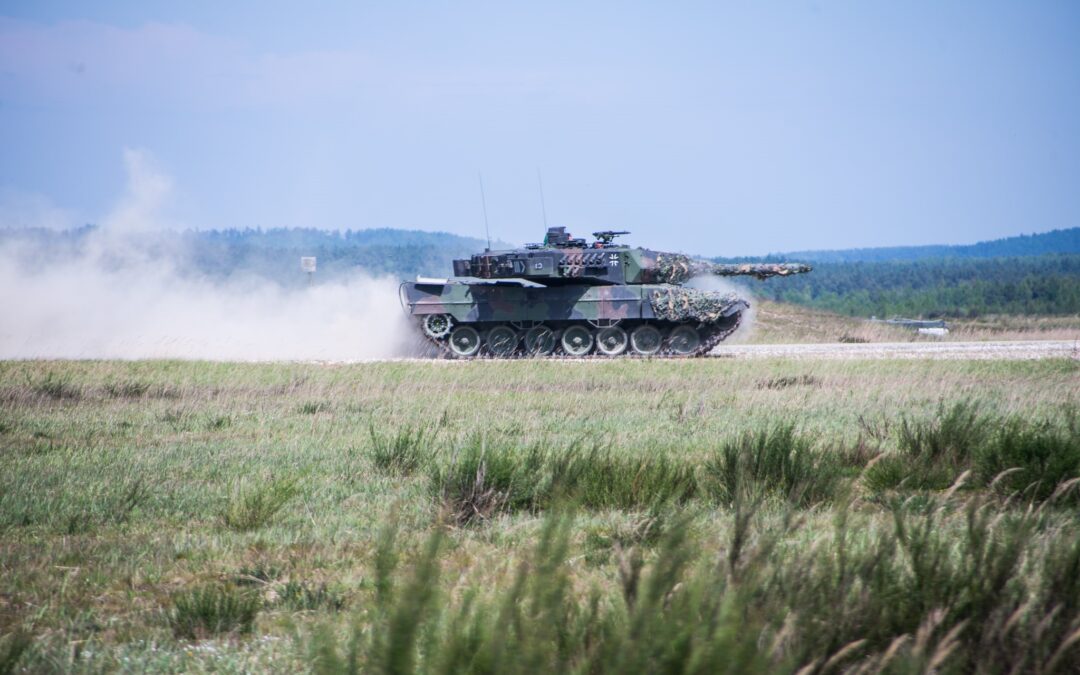Poland, Germany and the Netherlands have signed an agreement on plans to create a “military transport corridor” that would allow troops and equipment to be moved more easily through their territories to bolster NATO’s eastern flank.
They hope the decision will be a step towards creating a broader “military Schengen” zone within Europe that would allow military personnel and equipment to be moved freely just as the existing Schengen area allows free movement of people.
Parliamentary State Secretary Möller, 🇳🇱 @DefensieMin and 🇵🇱 @KosiniakKamysz signed a declaration on the establishment of a first military transit corridor. This shows the three partner nations’ determination and represents a new level for #MilitaryMobility. https://t.co/42kuWGcaBq
— Germany at NATO (@GermanyNATO) January 31, 2024
A memorandum of understanding was signed in Brussels yesterday by the three countries on the sidelines of a meeting of European defence ministers.
“We need a military Schengen to move military personnel and materiel more quickly and efficiently,” tweeted Dutch defence minister Kajsa Ollongren. “This will make Europe stronger. We took an important step: Poland, Germany and the Netherlands signed a declaration to achieve a military corridor.”
“Currently, the effectiveness of military mobility is hampered by the different administrative requirements of countries,” noted her Polish counterpart, Władysław Kosiniak-Kamysz. “In light of the ongoing conflict in Ukraine, we know how important it is to move efficiently within the EU.”
“We are taking military mobility to a new level on the road to a true military Schengen,” declared Germany’s parliamentary state secretary for defence, Siemtje Möller, quoted by Polskie Radio.
We need a military Schengen to move military personnel and materiel more quickly and efficiently. This will make Europe stronger. We took an important step: Poland, Germany and the Netherlands signed a declaration to achieve a military corridor.
— Kajsa Ollongren (@DefensieMin) January 31, 2024
The agreement is part of efforts to create “simplified, standardised and accelerated Europe-wide procedures”, said Germany’s defence ministry.
“The focus is primarily on the transport of troops, material and supplies from deep-sea ports on the North Sea to the particularly exposed NATO eastern flank,” it added.
The system “could create a kind of ‘Military Schengen’ analogous to the Schengen area, which allows citizens in Europe to travel freely without controls”, continued the German ministry, which made clear that Russian aggression against Ukraine is behind the need for increased military preparedness.
Wicepremier – minister obrony narodowej Władysław @KosiniakKamysz podpisał z minister obrony🇳🇱 @KajsaOllongren oraz wiceminister🇩🇪 S. Möller list intencyjny w sprawie procedur przemieszczania wojsk. Podpisanie dokumentu w ramach trójstronnej współpracy przyczyni się do… pic.twitter.com/HRiNN2TphZ
— Ministerstwo Obrony Narodowej 🇵🇱 (@MON_GOV_PL) January 30, 2024
“We want our initiative to be a good example for other NATO countries, but also for the EU, to implement the solutions we have developed,” said Kosiniak-Kamysz, quoted by the Polish Press Agency (PAP). “I hope that in the future, this will allow for the unification of procedures throughout the EU and NATO.”
Last year, the chief of NATO’s logistics command, Lieutenant-General Alexander Sollfrank, warned that red tape was hindering cross-border troop movements in Europe.
“We are running out of time,” he told Reuters. “What we don’t get done in peacetime won’t be ready in case of a crisis or a war.”
NATO urges members to build military Schengen https://t.co/SLJuoT9RwD
— Euractiv (@Euractiv) November 23, 2023

Notes from Poland is run by a small editorial team and published by an independent, non-profit foundation that is funded through donations from our readers. We cannot do what we do without your support.
Main image credit: Javon Spence/7th Army Training Command (under CC BY 2.0)

Daniel Tilles is editor-in-chief of Notes from Poland. He has written on Polish affairs for a wide range of publications, including Foreign Policy, POLITICO Europe, EUobserver and Dziennik Gazeta Prawna.



















